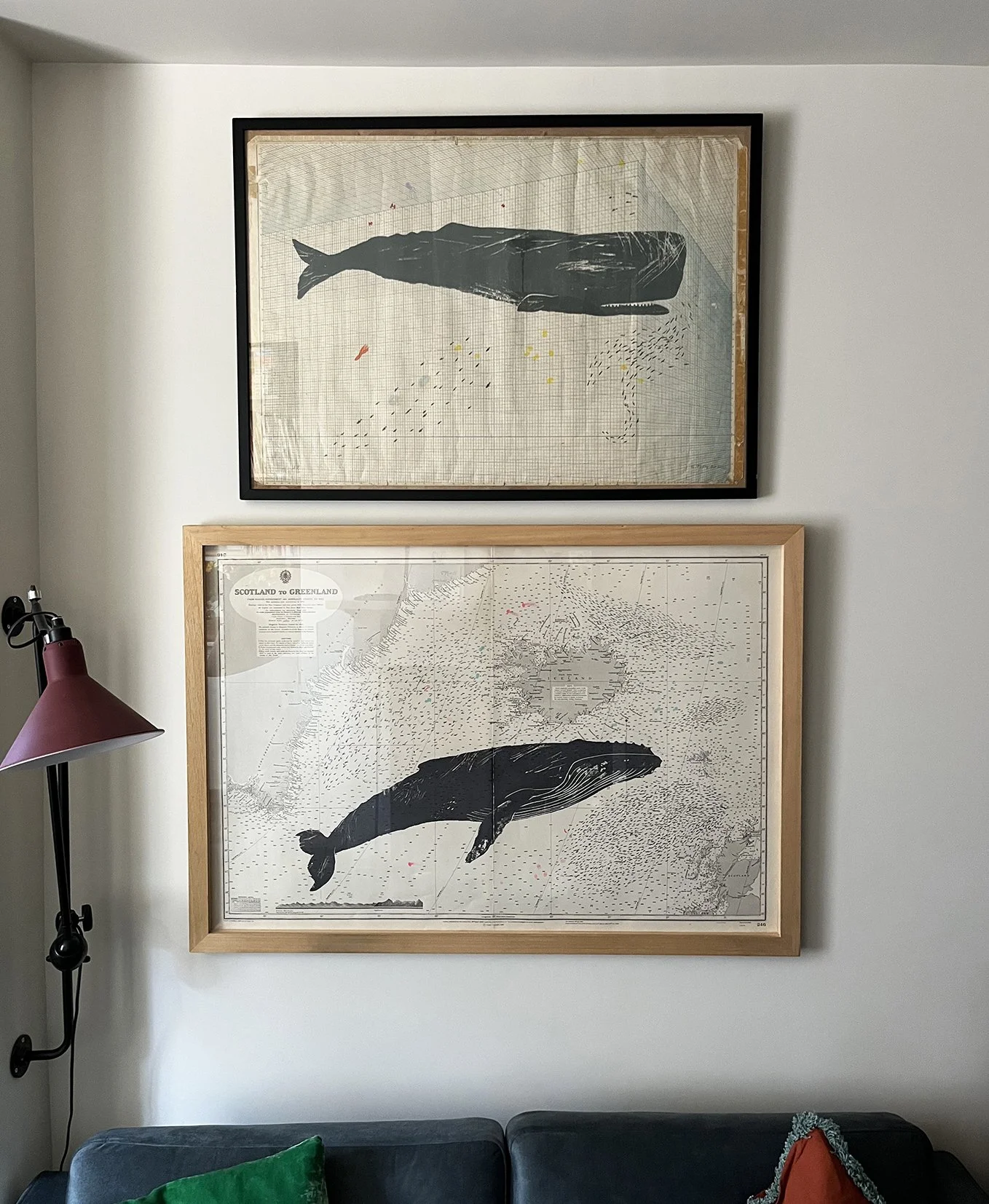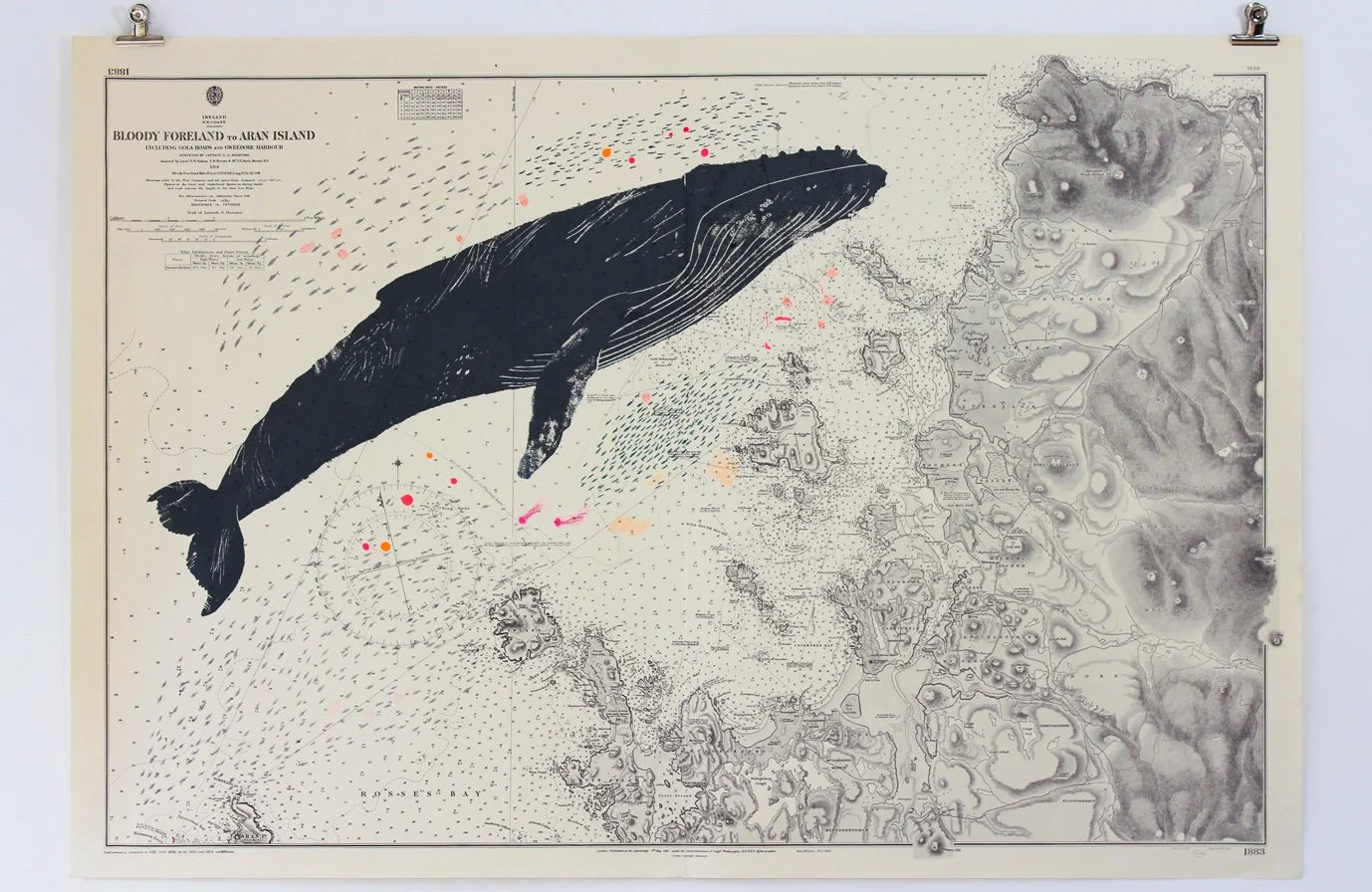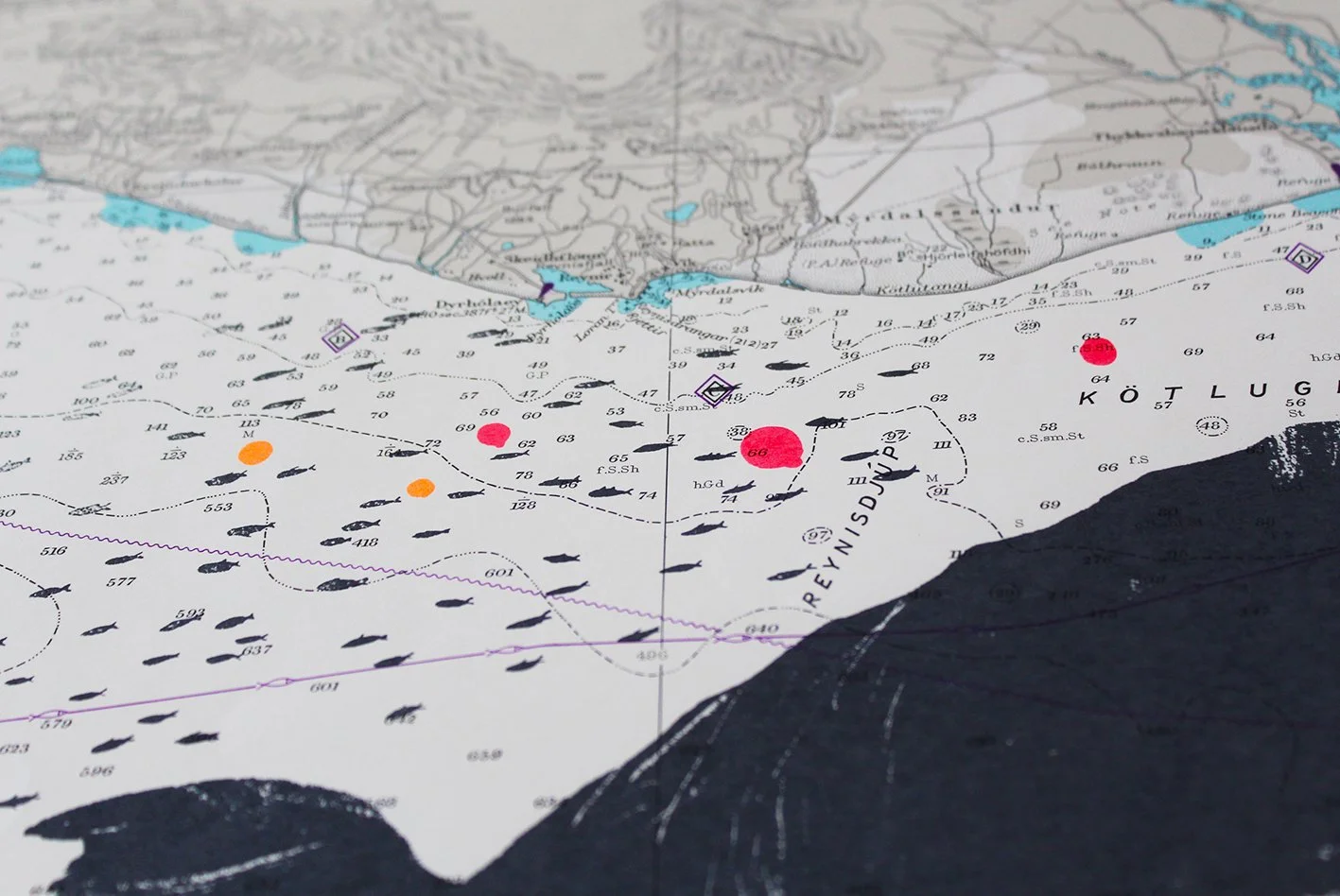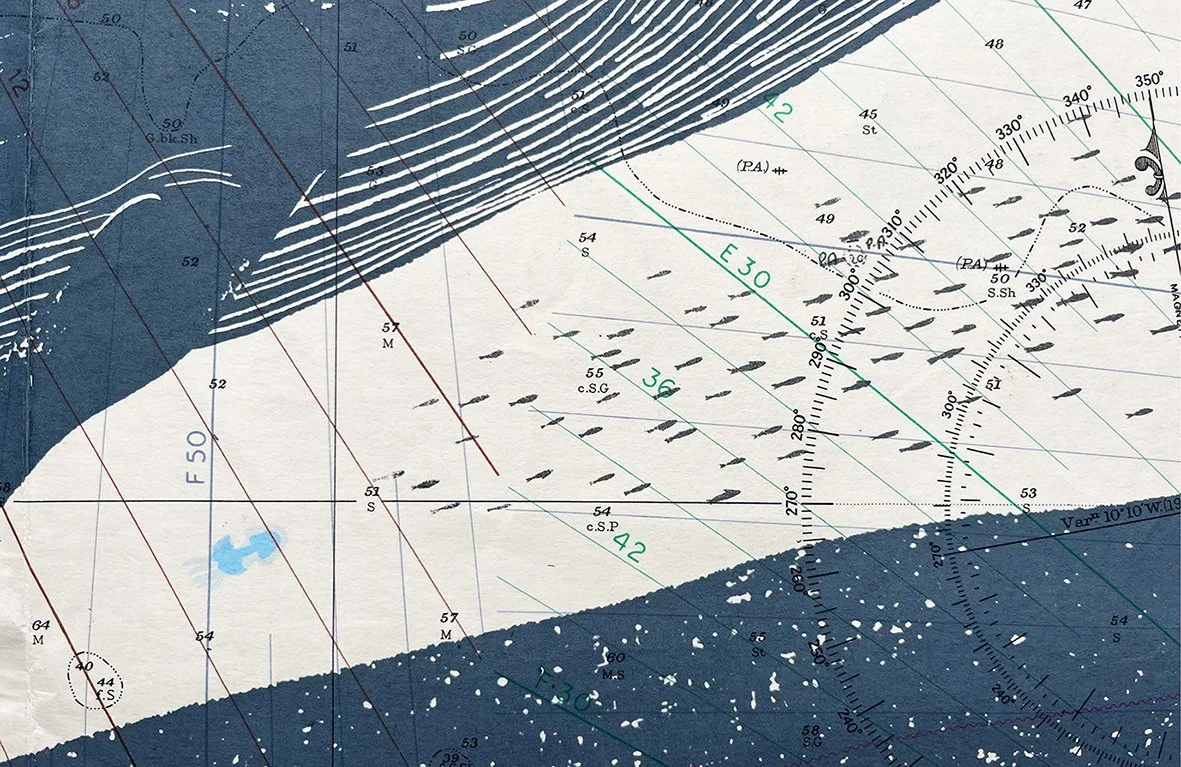
How I Started Making My Whale Prints
When I first moved to the Northumberland coast I heard that a sperm whale had become stranded and died on a nearby beach. I decided to head out to draw. It was an eerie and moving sight, a small crowd had gathered in silence and I drew as scientists took samples for research.
A few months later I came across a well-worn vintage sheet of Perspective Indicator paper in a junk shop. This large sheet of graph paper with its turquoise criss-crossing lines gave the impression of underwater sonar.
The experience with the sperm whale had stuck with me so I had the idea of printing an image of a large sperm whale onto the vintage paper.
From there, I developed it further into a series of whale prints onto old sea charts. The charts, like the Perspective Indicator paper, are well used sheets of vintage paper - often they have hand drawn marks made by navigators at sea, plotting their route or indicating a wreck, adding to the unique qualities of the charts.
We then decided to travel as a family, sketchbooks in hand, to Húsavik in north east Iceland to draw live humpback whales in Skjálfandi Bay, spotting so many whales lunge feeding and diving all around us, including a mother with her not-yet-fully-bouyant calf. This trip inspired a series of humpback whale prints.
How To Buy A Whale Print?
I make my screen prints in small batches and sell them in online private views in my shop.
They are a series of Unique Prints onto vintage sea charts usually featuring
whales and the sea creatures they encounter.
The prints normally sell out within the first day, so to avoid disappointment sign up to my newsletter here to get a heads up on the next batch.
How To Frame Them?
Personally, I prefer to keep it simple - frame right to the edge of the print or use a float mount with a narrow gap (an inch or two). I often choose a plain wooden or warm grey frame and I like the frame to be a deeper, box type frame.











